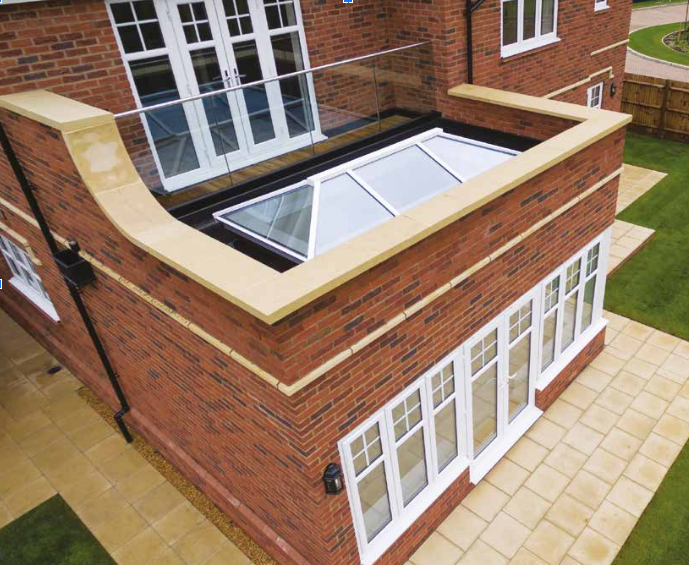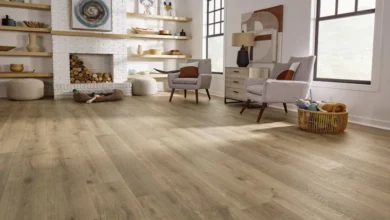
The Timeless Elegance and Practical Benefits of a Glass Roof Lantern
In modern architectural design, natural light has become a central feature in both residential and commercial spaces. One of the most stylish and effective ways to introduce abundant daylight into a property is through a glass roof lantern. This architectural element not only enhances brightness but also adds a touch of sophistication and luxury to any interior.
A glass roof lantern is essentially a raised, pitched structure installed on a flat roof. Its design allows maximum light to flood in from multiple angles, creating an airy and open atmosphere inside. With growing demand for energy efficiency, aesthetic appeal, and improved well-being, glass roof lanterns have become a popular choice for homeowners and designers alike.
What Is a Glass Roof Lantern?
A glass roof lantern is a glazed structure, typically made of aluminum or timber frames supporting large panes of glass. Unlike traditional skylights that are flush with the roof, roof lanterns are elevated and shaped with multiple facets. This design not only captures more natural light but also provides architectural interest.
The sloped angles of a roof lantern help diffuse daylight, spreading illumination evenly throughout a room. By evening, these lanterns also provide a stunning view of the sky, making them a centerpiece in any living space.
Historical Roots and Modern Applications
The concept of glass roof lanterns dates back to the grand architecture of the Renaissance and Victorian eras, when they were used to illuminate galleries, orangeries, and conservatories. Traditionally associated with luxury estates and public buildings, roof lanterns were once a symbol of elegance and prestige.
Today, technological advancements in glazing, insulation, and framing materials have made them accessible and practical for everyday homes. From modern extensions to kitchen-diners, orangeries, and loft conversions, glass roof lanterns are now a versatile option for contemporary living spaces.
Advantages of Installing a Glass Roof Lantern
1. Abundant Natural Light
The primary appeal of a glass roof lantern lies in its ability to maximize daylight. Unlike windows that are limited by surrounding walls, roof lanterns open up the ceiling to the sky. This reduces the need for artificial lighting during the day and creates a healthier, more energizing environment.
2. Enhanced Aesthetic Appeal
A roof lantern is not just functional it is also a striking architectural feature. Its elegant lines and transparent form create a sense of height and grandeur. Whether in a modern minimalist home or a traditional property, a glass roof lantern instantly elevates the overall design.
3. Energy Efficiency
Modern glass technology means that roof lanterns are now designed to retain warmth in winter and minimize overheating in summer. High-performance glazing, including low-emissivity coatings and thermal breaks in the frames, ensures energy efficiency and reduced utility bills.
4. Connection to the Outdoors
By allowing uninterrupted views of the sky, glass roof lanterns foster a stronger connection to nature. During the day, they bring in natural daylight; at night, they offer stargazing opportunities from the comfort of indoors. This connection enhances relaxation and creates a calming atmosphere.
5. Increased Property Value
Adding a roof lantern can significantly boost the appeal and market value of a property. Homebuyers increasingly value bright, open spaces, and a roof lantern creates exactly that making it a wise long-term investment.
See also: How Regular Cleaning Can Increase Your Productivity at Home
Ideal Spaces for a Glass Roof Lantern
Glass roof lanterns are versatile and can be installed in various parts of a home. Some of the most common applications include:
- Kitchen Extensions: They transform the heart of the home into a bright and welcoming gathering space.
- Dining Areas: A roof lantern above the dining table creates a dramatic setting for family meals and entertaining guests.
- Orangeries and Conservatories: Historically popular locations, these spaces benefit immensely from the added height and elegance.
- Living Rooms: A roof lantern can make a lounge area feel larger, lighter, and more inviting.
- Hallways and Entrances: Installing one in transitional spaces instantly brightens what would otherwise be dark zones of the home.
Design Considerations for Choosing a Glass Roof Lantern
When selecting a roof lantern, several factors should be taken into account to ensure it complements both the structure and lifestyle of the homeowners.
Size and Proportions
The dimensions of the roof lantern should be in proportion to the room it serves. A large lantern can become the focal point of a spacious living area, while smaller options are perfect for cozy extensions or hallways.
Glazing Options
Modern roof lanterns offer a range of glazing choices, including solar control glass, self-cleaning glass, and triple glazing for maximum insulation. The choice depends on the orientation of the property and the level of maintenance the homeowner prefers.
Frame Materials
Aluminum is a popular choice due to its slim sightlines, strength, and low maintenance. Timber frames provide a traditional aesthetic, while uPVC options are often chosen for affordability.
Ventilation
Some designs incorporate opening sections for ventilation, helping regulate indoor temperature and air quality. This is especially beneficial in kitchens or conservatories where heat can build up.
Architectural Style
A roof lantern should harmonize with the existing style of the property. Sleek, minimal frames suit contemporary homes, while more ornate designs can complement period properties.
The Installation Process
Installing a glass roof lantern requires expertise to ensure structural stability, weatherproofing, and compliance with building regulations. The process typically involves:
- Structural Assessment: Evaluating the roof to confirm it can support the weight of the lantern.
- Design and Customization: Selecting size, glazing, and frame finish tailored to the space.
- Roof Preparation: Creating an opening in the flat roof and reinforcing the surrounding structure.
- Fitting the Lantern: Positioning the frame and glazing securely, followed by sealing for weather resistance.
- Final Finishing: Ensuring insulation, plastering, and interior finishes are seamlessly completed.
Professional installation is strongly recommended to guarantee safety, performance, and longevity.
Maintenance and Care
Thanks to advances in glass technology, maintaining a roof lantern is relatively straightforward. Many models use self-cleaning glass that reduces the buildup of dirt and debris. Periodic checks for seals, frames, and drainage are advisable to prevent leaks and maintain efficiency. With minimal effort, a glass roof lantern will retain its clarity and performance for decades.
Creating a Bright Future with Glass Roof Lanterns
As homes continue to evolve to meet modern demands for comfort, sustainability, and beauty, the glass roof lantern stands out as an architectural solution that ticks all the boxes. It enhances natural light, elevates design, and improves energy performance, all while connecting inhabitants more closely to the outdoors.
For homeowners looking to transform their living spaces into brighter, more inspiring environments, a roof lantern is an investment in both style and functionality.



